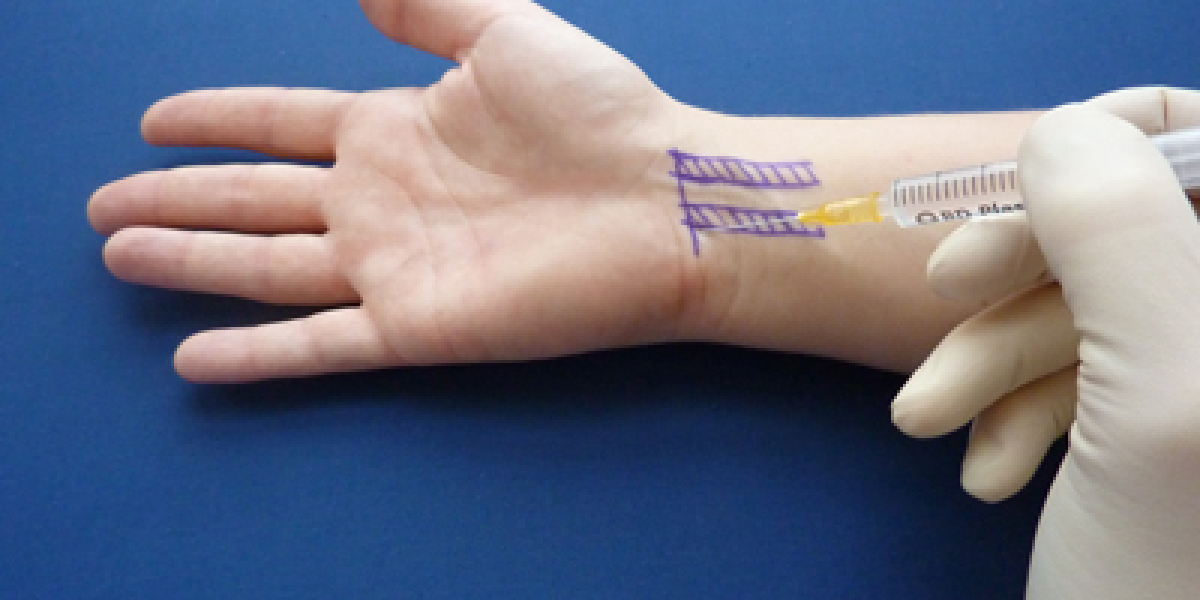Carpal tunnel syndrome is one of the most common conditions affecting the hands and wrists, impacting millions of people worldwide. It is characterized by pain, numbness, and tingling sensations that result from compression of the median nerve, which passes through the narrow carpal tunnel in the wrist. Left untreated, it can severely affect daily activities such as typing, gripping, or even holding small objects. While treatment options vary from lifestyle adjustments to surgery, carpal tunnel injections have become an effective and widely recommended method for managing symptoms.
This guide provides an in-depth look at what carpal tunnel injections are, how they work, their benefits, possible side effects, and how they compare with other treatment options.
Understanding Carpal Tunnel Syndrome
Carpal tunnel syndrome occurs when the median nerve, which controls sensation and movement in parts of the hand, becomes compressed. This compression is often caused by swelling or thickening of the tissues surrounding the tendons within the carpal tunnel. Symptoms range from mild discomfort to severe pain and can affect sleep, work, and overall quality of life.
The condition is more common among people who perform repetitive wrist movements, such as typing, assembly line work, or prolonged use of handheld devices. Certain medical conditions such as diabetes, arthritis, and thyroid disorders can also increase the risk.
What Are Carpal Tunnel Injections?
Carpal tunnel injections are a non-surgical treatment designed to reduce pain and inflammation associated with the condition. These injections typically contain corticosteroids, which are powerful anti-inflammatory medications. By delivering the drug directly into the carpal tunnel space, the injection can reduce swelling around the median nerve and provide significant symptom relief.
Unlike oral medications, which may affect the entire body, targeted injections work locally, making them more effective at addressing the source of the problem. For many patients, this treatment provides temporary relief that can last weeks to months, giving them the ability to continue their daily routines with reduced discomfort.
How Do Carpal Tunnel Injections Work?
The main goal of carpal tunnel injections is to reduce inflammation. Corticosteroids mimic the natural hormones produced by the adrenal glands, which regulate inflammation and immune responses. Once injected into the wrist, the medication decreases swelling of the tendons and tissues surrounding the median nerve, relieving pressure and improving function.
The injection is usually administered under sterile conditions by a trained medical professional. Some doctors may use ultrasound guidance to ensure precise placement of the needle, improving effectiveness and minimizing complications. Patients often notice improvement within a few days, though in some cases, relief can be immediate.
Benefits of Carpal Tunnel Injections
Carpal tunnel injections offer several advantages, particularly for individuals who are not ready for surgery or who require temporary relief:
Quick Symptom Relief: Many patients experience reduced pain, tingling, and numbness within days.
Minimally Invasive: Unlike surgery, injections require no incisions or lengthy recovery time.
Improved Daily Function: Relief allows individuals to continue working, exercising, and performing daily activities.
Diagnostic Value: A successful injection confirms that symptoms are truly caused by carpal tunnel syndrome.
Alternative to Medication: Injections target the affected area directly, reducing the need for long-term oral medications.
These benefits make injections an attractive option for both short-term relief and as part of a broader treatment plan.
The Procedure: What to Expect
Understanding what happens during the procedure can help ease patient anxiety.
Preparation: The wrist is cleaned and sterilized to prevent infection. A numbing agent may be applied to reduce discomfort.
Injection: A corticosteroid solution, sometimes combined with a local anesthetic, is injected into the carpal tunnel space.
Post-Injection Care: Patients may experience temporary soreness at the injection site, but this usually subsides quickly. Resting the wrist for a day or two may be recommended.
The procedure typically takes only a few minutes and does not require hospital admission. Most people can return to normal activities soon afterward.
Effectiveness of Carpal Tunnel Injections
Research shows that corticosteroid injections are highly effective in reducing symptoms, especially in the short term. Many patients report significant relief lasting from several weeks to several months. For some, a single injection may provide enough relief, while others may require repeated treatments.
However, injections are generally considered a temporary solution rather than a permanent cure. They can delay the need for surgery and provide valuable relief, but symptoms may eventually return if the underlying cause is not addressed.
Risks and Side Effects
While generally safe, carpal tunnel injections are not without risks. Potential side effects include:
Temporary Pain or Swelling: Mild discomfort at the injection site is common but short-lived.
Skin Changes: Some patients may notice lightening or thinning of the skin around the injection area.
Nerve Injury: Though rare, improper placement of the needle can cause nerve irritation.
Infection: As with any injection, there is a small risk of infection.
Limited Frequency: Repeated injections over time can weaken tendons and are therefore limited.
Discussing risks with a healthcare provider ensures patients make informed decisions.
Carpal Tunnel Injections vs. Other Treatments
Carpal tunnel syndrome has multiple treatment options, and injections are often compared with other methods.
Wrist Splints: Non-invasive and inexpensive, splints support the wrist and are often recommended first.
Physical Therapy: Exercises and stretches can improve wrist function, though results may take longer.
Oral Medications: Anti-inflammatory drugs provide mild relief but may have systemic side effects.
Surgery: Reserved for severe cases, surgery can permanently relieve symptoms but involves recovery time.
Compared to these, injections offer a middle ground—more effective than splints or medications, but less invasive than surgery.
Who Should Consider Carpal Tunnel Injections?
Injections are not suitable for everyone. They are generally recommended for individuals who:
Have moderate to severe symptoms that interfere with daily life.
Have not responded to wrist splints, therapy, or medications.
Are not ready or suitable for surgery due to health concerns.
Need temporary relief while preparing for surgical intervention.
A consultation with a healthcare professional is essential to determine whether injections are the right option.
Long-Term Outlook After Carpal Tunnel Injections
While injections can provide significant relief, long-term management of carpal tunnel syndrome often requires a combination of strategies. Patients may still need to make ergonomic adjustments, take regular breaks during repetitive tasks, or undergo surgery if symptoms persist.
The key to long-term success lies in early diagnosis and proactive treatment. By addressing symptoms promptly, individuals can avoid permanent nerve damage and maintain hand function.
Living with Carpal Tunnel Syndrome
Beyond injections and medical treatments, lifestyle changes play an important role in managing carpal tunnel syndrome. Simple strategies such as adjusting workstations, using ergonomic keyboards, and practicing hand stretches can prevent flare-ups. Maintaining overall health through exercise and weight management also helps reduce strain on the wrists.
Combining medical treatments like injections with healthy habits creates the best chance for long-lasting relief and improved quality of life.
Conclusion
Carpal tunnel injections represent a safe, effective, and minimally invasive treatment option for individuals struggling with the discomfort of carpal tunnel syndrome. By directly targeting inflammation in the wrist, these injections provide quick relief, restore function, and help patients continue with their daily routines.
Although not a permanent cure, they serve as an important step in managing the condition—whether as a standalone treatment or in combination with other therapies. For those experiencing persistent pain and tingling in the hands, consulting a healthcare provider about carpal tunnel injections may be the key to regaining comfort and mobility.








